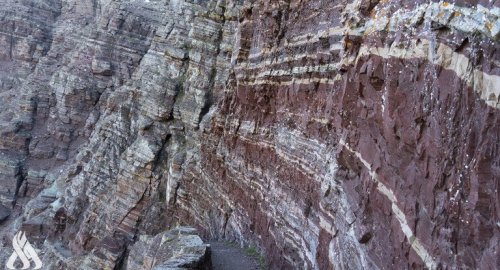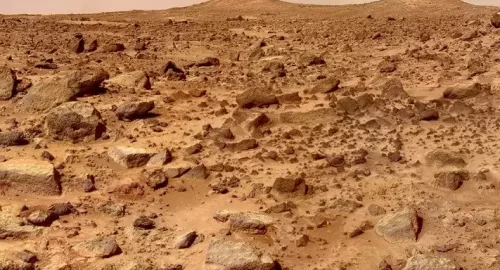
Study: Unconventional sedimentary rocks spotted across five continents

- 22-12-2023, 08:46
INA- sources
A bizarre type of sedimentary stone has popped up in 11 countries and five different continents worldwide both inland and on the coast.
Recently, scientists studying sedimentary geology, particularly focusing on the formation and characteristics of these sedimentary stones found that these rocks are composed of plastic and clasts from pre-existing rocks.
Plastistones uncovered worldwide
Scientists are calling this novel sedimentary rock – Plastistones. The plastic-rock complexes are composed of a fusion of plastic materials and clasts from pre-existing rocks.“Plastistones have been found on a global scale, both in coastal and inland regions,” the authors noted.
The formation process of plastistones involves the lithification (the process of becoming rock) of plastics, such as polyethylene (PE), polyethylene terephthalate (PET), polypropylene (PP), and other plastic polymers, along with natural rock fragments or clasts.
The authors described sedimentary stones as: “Rock that has formed from lithification of any type of sediment, precipitation from solution, or consolidation of the remains of plants or animals.”
Human-induced waste led to formation
Plastistones form when these plastic materials, often originating from human-generated waste like packaging, containers, or maritime activities, experience burning, wave action, evaporation, or chemical bonding.During these procedures, the plastics combine with existing rock fragments, sediment, or minerals, becoming integrated into the sedimentary mix.
The fusion occurs through various means, leading to the creation of a composite rock structure where plastics and natural materials are integrated.
“Plastistones can form through a variety of means, including campfire or plastic waste burning, wave action, evaporation, or chemical bonding,” the study explained. “Plastistones have been shown to alter the microbial communities of the surrounding environment and can generate significant amounts of microplastics and nanoplastics.”
The authors added: “This new type of sedimentary rock provides compelling evidence of how human activities can act as a powerful exogenic geological process that reshapes the geological record of our planet.”
source: Interesting Engineering
A penalty has been announced for Bellingham
- Sport
- 25/02/19
Prince Mohammed bin Salman calls for Gulf-Jordanian-Egyptian meeting to enhance Arab action
- International
- 25/02/20
Al-Sudani Inaugurates the Digital Transformation and Automation Center
- politics
- 25/02/17
The Cabinet holds the regular session, decisions included
- politics
- 25/02/18
Kurdistan Region oil exports via Ceyhan Port to be resumed
- Economy
- 25/02/22












